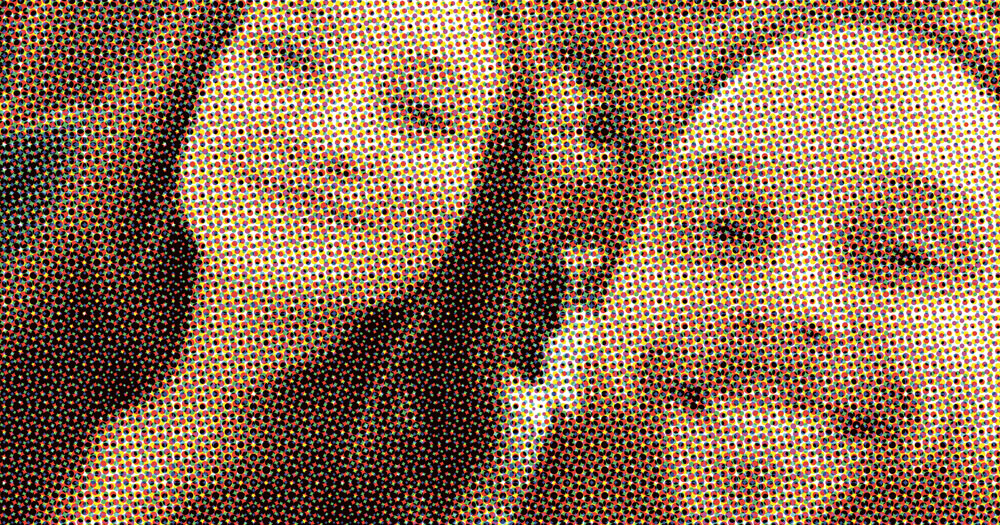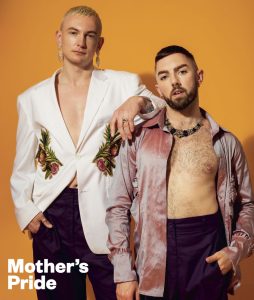Another fabulous Pride season has come and gone, but GCN sat down with two of the queer community’s more ‘hidden’ members to learn all about their relationship with the annual LGBTQ+ celebration.
Matt (he/him) is a Trans man who identifies as heterosexual, while Róisín (she/her) is cisgender and bisexual. Their journeys to discover their true queer selves began separately, but for the past eleven months, they’ve been sharing their pride with one another and discovering how they fit into the rainbow family as a hidden queer couple.
On his journey of self-discovery, Matt said, “Mine starts with cosplay.” He discovered his true gender identity by following a YouTuber who was both a cosplayer (someone who participates in ‘costume play’, ie dressing up as a character from some form of fictional media) and a Trans man.
Wanting to understand more about what it meant to be Trans, he found more and more people sharing their stories online through what Matt calls “the YouTube void”.
“I was mad into Naruto at the time,” he recalls, casting his mind back as far as 2011. “So there was this one guy who did a lot of Naruto cosplay and skits and whatnot … This guy, he said he uses cosplay to be himself, because in anime and cosplay there’s a lot of, say, male characters dressing up as female characters. There is a kind of a gender fluidity to it.
“So he was like, I can dress up as all the male characters I want and it’s not weird. Like, I’m being myself but I’m hiding that I’m being myself. So I think cosplay got me to my understanding.”
With a four-year age gap between them, Róisín came to terms with her sexual identity a little later, not long after she attended her first and (at the time) only Pride parade.
“That was in 2019, at which point I was convinced I was straight,” she says, admitting that the discovery came with some internal struggles. “It got to the point where I started to kind of hate a lot of women. And it was either because I wanted to be them, or I wanted to be with them. And I think that’s an issue that a lot of people have. And yeah, it was very blurry for me at first. Then I recognised that I needed
to not hate other women, so then I could realise who I liked.”
“I remember I was living with a girl when I was in second year two years ago,” she continues, “and she mentioned the word ‘bi-curious’. She said she was bi-curious and I hated the word because, to me, it suggested that you have to experiment in order to move on, to progress to bisexual. And I was pretty
sure that I was bi at the time … And I was like, I’m not bi-curious, I’m just bisexual. And then I kind of had to accept it.”
As with Róisín’s discovery of her bisexuality, Matt’s gender identity came with struggles of its own, specifically when it came to dating.
“It was a lot of, like, trying to be a ‘normal’ guy, because it was not okay that I was the way I was,” Matt tells us of a previous relationship with someone who did not identify as queer or consider herself to be part of the LGBTQ+ family. “So if I was to be all outspoken and talking about Trans rights or LGBTQ+ rights or anything like that, that would have been flagged and it would have made it a lot worse for me.”
In Róisín’s previous relationships, her queerness was not recognised or celebrated in the way that it should have been either.
“My ex never said anything outrightly queerphobic but … because I am more feminine-presenting, it’s kind of – it’s sexualised,” she says, recalling when she came out to her then-boyfriend. “His response was, ‘That’s okay, you can get with girls, but as long as I can watch’. Instantly my experience of being bisexual while being in a relationship with a man was that me getting with women was only for the pleasure of men.”
Róisín’s profile picture on dating apps was a photo of herself at Pride wrapped in a rainbow flag and she tells us that potential suitors were quick to comment on it.
“It was always this kind of odd fascination,” she says, mentioning that guys would often ask about her sexuality right off the bat. “It was actually my profile picture on Bumble, so what Matt’s first
impression of me would have been,” she adds with a smile.
“When me and Matt first met, he told me that the first date we had, I did not shut up about being bi,” Róisín laughs, “so I definitely had that established from before we met. But it’s definitely something I’ve thought a lot about in the last [several] months. And yeah, so I’ve definitely kind of come into it a lot more, or even kind of come to terms with it, if that’s the right phrase.”
The pair gleefully attended Pride this year (and also raised funds for BeLonG To by giving Pride flag manicures) but Matt, having only previously attended two Pride parades, does point out that he doesn’t always feel at home in queer environments, as his gender identity is somewhat hidden.
“We blend [into the mainstream] a lot more than we do visit the queer spaces,” Matt said. “The intention is always there to go somewhere [but] I would feel a little bit, I don’t know, like an outsider.”
Matt admits that, in the back of his head, he would be worried people would think he’s there for the wrong reasons, as a straight/cis person enjoying the spectacle of a queer environment.
“I also feel like I’m probably not queer enough – and that’s a problematic thing in my own head, as well – that I’m a straight man. I’m so privileged in so many different other ways that all the things that are hard about being queer kinda bypass me.”
Since Róisín only discovered her sexual identity in 2019, her Pride journey was interrupted by two years of pandemic.
“I didn’t have the chance to go to these queer spaces. And, now obviously, there’s a lot of anxiety about going back into the big bad world. I mean, we’ve talked about going to queer spaces … But when we’re talking to people, I think we really do just seem like really good allies.”
When asked how they feel about being mistaken for a non-queer couple, Róisín said, “Sometimes I wish it was more obvious when I’m talking to queer people because I’m like ‘hey, I’m one of you! You can trust me!'”
She details her inner conflict over wanting to discuss issues faced by the LGBTQ+ community but also not feeling like her voice is valid because she does not personally face many of those issues as a woman in a relationship with a straight man.
“But then, in a way, obviously, appearing straight is a benefit, unfortunately, considering I can avoid any queerphobia,” she continues. “Especially if we walk down the street holding hands people go ‘oh, it’s a straight couple.’”
Although Matt and Róisín haven’t yet frequented queer spaces as a pair, Róisín is surrounded by LGBTQ+ colleagues at her place of work and she notes the refreshing responses of her colleagues upon learning that she’s dating a Trans man.
“Of the 20 or so people that I’ve worked with over the last year, I’d say about four or five of them identify as cisgender and heterosexual. So it’s just interesting to be around them and [have them be] so accepting as well,” she says.
She recalls telling her friend and supervisor that she was dating a Trans man and his response was an understated, “Okay, cool”, while her non-queer peers typically give more of an “Oh my god, wow!” reaction.
“I feel like, in a way, I’m very concerned with what other people think of me,” Róisín admits. “And in a way, I kind of think, because I’m in a straight relationship, and I’m a woman in a relationship with a man, that makes me invalid as bi. But the fact that Matt is Trans, nearly kind of validates it for me… which, I will say, could be a little bit problematic because I shouldn’t have to be validated.
“But yeah,” she continues, “the fact that I have Matt to support me, and the fact that we’re both kind of feeling like we’re not queer enough, and we’re both going ‘no, you’re queer’, ‘no, you’re queer’ … I’m realising it makes me feel a bit more valid. I suppose even just the fact that there’s somebody else who is a hidden queer [helps].”
As they slowly become more and more at home in their queer identities, Matt and Róisín learn from each other every day, holding each other to higher standards when it comes to knowledge of queer issues and ensuring they always use the correct pronouns when addressing others.
This pair of ‘hidden queers’ may have started their journeys independently, but now that they’ve found each other, it’s becoming easier for them to continue finding themselves, this Pride, next Pride and beyond.
© 2022 GCN (Gay Community News). All rights reserved.
This article was published in the print edition Issue No. 372 (June 10, 2022). Click here to read it now.
Support GCN
GCN is a free, vital resource for Ireland’s LGBTQ+ community since 1988.
GCN is a trading name of National LGBT Federation CLG, a registered charity - Charity Number: 20034580.
GCN relies on the generous support of the community and allies to sustain the crucial work that we do. Producing GCN is costly, and, in an industry which has been hugely impacted by rising costs, we need your support to help sustain and grow this vital resource.
Supporting GCN for as little as €1.99 per month will help us continue our work as Ireland’s free, independent LGBTQ+ media.

